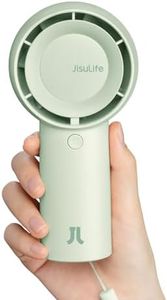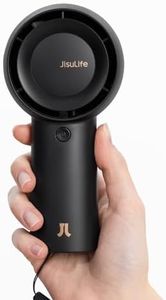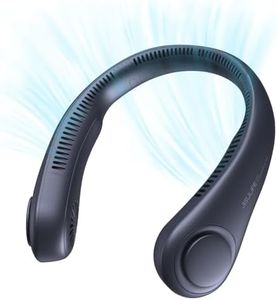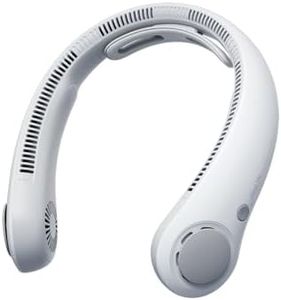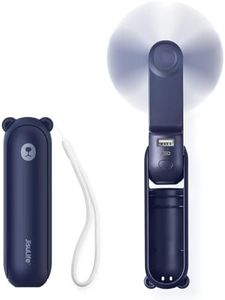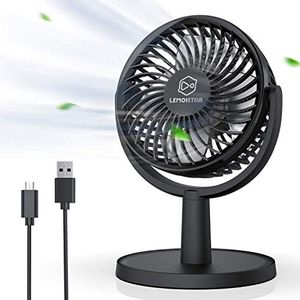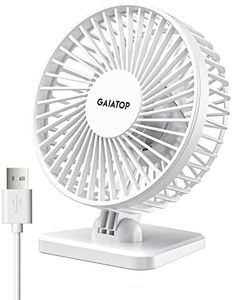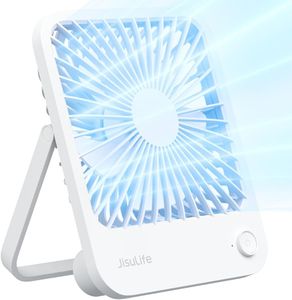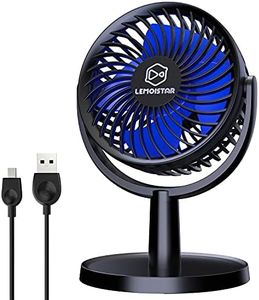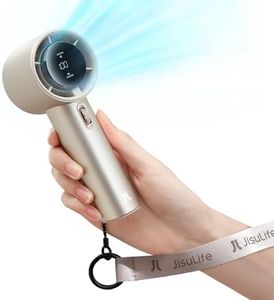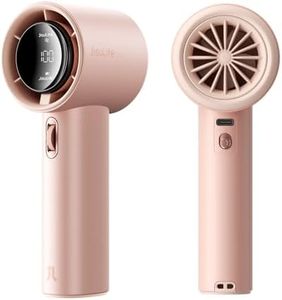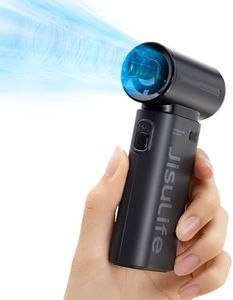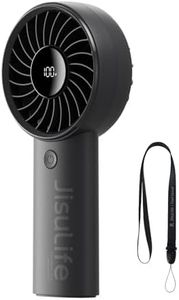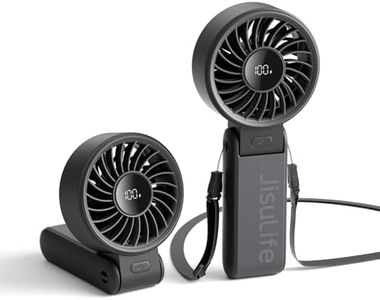We Use CookiesWe use cookies to enhance the security, performance,
functionality and for analytical and promotional activities. By continuing to browse this site you
are agreeing to our privacy policy
10 Best Personal Fans
From leading brands and best sellers available on the web.By clicking on a link to a third party's website, log data is shared with that third party.
Buying Guide for the Best Personal Fans
Selecting a personal fan seems easy at first, but finding one that is truly comfortable, efficient, and suitable for your daily life can make a big difference. It's essential to consider where and how you'll use the fan—whether on your desk, bedside, or even while traveling—and match it with the right features so you stay cool without hassle.Size and PortabilitySize refers to how big the fan is and how easy it is to move or carry around. Some fans are compact and meant to be handheld or easily fit in a bag—these are perfect for travel or if you want something to take on the go. Desk fans are a bit larger but still portable enough for most tabletops. Larger personal fans may offer more power but are less convenient if you need to frequently move them. Think about where you'll mostly use the fan: for on-the-go comfort, choose small and light; for stationary use like on a desk, slightly larger is okay.
Power SourcePersonal fans can be powered by batteries, USB connection, or plugged into a wall outlet. Battery-operated fans are extremely portable, but you need to consider how often you'll need to replace or recharge the batteries. USB-powered fans are great for use with laptops or power banks, making them ideal for desks or while traveling with electronics. Plug-in versions may offer more power or longer run times but are best if you have a consistent access to an outlet. If you move around a lot, a battery or USB option gives more flexibility.
Airflow SettingsAirflow settings refer to how many speed or power levels a fan offers, affecting how much air it moves. Some fans have only one setting, while others offer two or three, or even variable control. The more settings, the easier it is to adjust comfort based on conditions, such as a gentle breeze when you're up close or stronger airflow for hotter days. If you like fine-tuning your comfort or want flexibility for different situations, look for multiple speed settings.
Noise LevelNoise level measures how much sound the fan makes while it's running. Some fans are specially designed to be ultra-quiet, ideal for using in a bedroom, library, or during work or study. Others can be a bit noisier, but this typically means they move more air. If you are sensitive to noise, check for products that highlight quiet or silent operation. If a little noise doesn't bother you, you can focus more on airflow or features.
Adjustability and OscillationAdjustability covers whether you can tilt or direct the fan head and whether the fan oscillates (moves side to side to spread air). Fixed fans blow air in one direction, while adjustable or oscillating fans help cool a wider area. If you're going to use the fan in one spot and direction, fixed is fine. For shared spaces or more widespread cooling, look for adjustable angles and oscillation.
Build Quality and SafetyBuild quality includes the materials used and how durable the fan feels. Metal fans last longer and handle falls better, while plastic fans are lighter and usually cheaper. Safety is important if kids or pets are around: choose a fan with protective grills to keep fingers and paws safe. Consider your usage environment—if it's busy or has young family members, pick one with good protection and sturdy construction.
